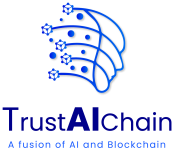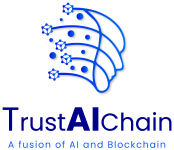The Scope of Drug Abuse
Drug abuse impacts not only the individuals involved but also their families, communities, and society at large. The opioid crisis, for instance, has highlighted the urgent need for effective strategies to combat drug misuse. According to the Centers for Disease Control and Prevention (CDC), over 70,000 drug overdose deaths occurred in the United States in 2019 alone. This alarming statistic underscores the necessity for innovative approaches in tackling this issue.

Role of Artificial Intelligence in Drug Abuse Prevention
AI has the potential to revolutionize drug abuse prevention through its capabilities in data analysis, pattern recognition, and predictive modeling.
1. Predictive Analytics:AI can analyze vast amounts of data to identify patterns and predict individuals at risk of drug abuse. Predictive analytics involves using machine learning algorithms to analyze historical data and identify risk factors associated with drug misuse.
Example Code: Predictive Analytics with Python
Python
import pandas as pd
from sklearn.model_selection import train_test_split
from sklearn.ensemble import RandomForestClassifier
from sklearn.metrics import accuracy_score
# Load dataset
data = pd.read_csv(‘drug_abuse_data.csv’)
# Feature selection
features = data[[‘age’, ‘gender’, ‘socioeconomic_status’, ‘mental_health_history’, ‘prescription_history’]]
target = data[‘risk_of_abuse’]
# Split data into training and testing sets
X_train, X_test, y_train, y_test = train_test_split(features, target, test_size=0.2, random_state=42)
# Train a Random Forest Classifier
model = RandomForestClassifier(n_estimators=100, random_state=42)
model.fit(X_train, y_train)
# Make predictions
predictions = model.predict(X_test)
# Evaluate the model
accuracy = accuracy_score(y_test, predictions)
print(f”Model Accuracy: {accuracy * 100:.2f}%”)
In this example, a Random Forest Classifier is trained to predict the risk of drug abuse based on various features such as age, gender, socioeconomic status, mental health history, and prescription history.
2. Behavioral Analysis:AI can monitor and analyze social media and other online behaviors to identify signs of drug abuse. Natural Language Processing (NLP) techniques can analyze text data and detect keywords or phrases indicative of drug misuse.
Example Code: Sentiment Analysis with Python
Python
from textblob import TextBlob
# Sample text data
text_data = [
“I can’t stop thinking about opioids.”,
“Feeling great and sober today!”,
“Struggling with addiction, need help.”
]
# Analyze sentiment
for text in text_data:
analysis = TextBlob(text)
sentiment = analysis.sentiment.polarity
print(f”Text: {text}\nSentiment: {‘Positive’ if sentiment > 0 else ‘Negative’ if sentiment < 0 else ‘Neutral’}\n”)
This code snippet uses TextBlob to analyze sample text data sentiment, helping identify negative sentiments that may indicate drug abuse.
3. Personalized Treatment Plans:AI can develop personalized treatment plans by analyzing individual patient data, including medical history, genetic information, and response to previous treatments. This ensures that patients receive the most effective interventions tailored to their needs.

Role of Blockchain in Drug Abuse Prevention
Blockchain technology offers a secure and transparent way to store and manage data, crucial in preventing drug abuse.
- Secure Medical Records:Blockchain can provide a secure and tamper-proof system for storing medical records. This ensures that patient data, including prescriptions and treatment history, cannot be altered or falsified.
Example Code: Blockchain Smart Contract with Solidity
Solidity
pragma solidity ^0.8.0;
contract MedicalRecords {
struct Record {
uint id;
string patientName;
string treatment;
uint timestamp;
}
mapping(uint => Record) public records;
uint public recordCount = 0;
function addRecord(string memory _patientName, string memory _treatment) public {
recordCount++;
records[recordCount] = Record(recordCount, _patientName, _treatment, block.timestamp);
}
function getRecord(uint _id) public view returns (uint, string memory, string memory, uint) {
Record memory record = records[_id];
return (record.id, record.patientName, record.treatment, record.timestamp);
}
}
In this Solidity example, a smart contract is created to manage medical records on the Ethereum blockchain. Each record is immutable and timestamped, ensuring data integrity and security.
- Supply Chain Transparency:Blockchain can be used to track the entire supply chain of pharmaceuticals, ensuring that drugs are not diverted for illegal use. This includes tracking the manufacturing, distribution, and dispensing of medications.
Example Code: Tracking Pharmaceuticals with Hyperledger Fabric
YAML
# Blockchain network configuration
network:
version: ‘2’
services:
peer0.org1.example.com:
image: hyperledger/fabric-peer
environment:
– CORE_PEER_ID=peer0.org1.example.com
– CORE_PEER_LOCALMSPID=Org1MSP
– CORE_PEER_MSPCONFIGPATH=/etc/hyperledger/msp/users/Admin@org1.example.com/msp
volumes:
– ../crypto-config/peerOrganizations/org1.example.com/peers/peer0.org1.example.com/msp:/etc/hyperledger/msp
ports:
– 7051:7051
…
# Chaincode for tracking pharmaceuticals
chaincode:
name: pharma_cc
version: 1.0
path: github.com/chaincode/pharma_cc
# sample chaincode function
func (t *SimpleChaincode) initPharma(stub shim.ChaincodeStubInterface, args []string) pb.Response {
if len(args) != 3 {
return shim.Error(“Incorrect number of arguments. Expecting 3”)
}
var pharma = Pharma{Manufacturer: args[0], Distributor: args[1], Retailer: args[2]}
pharmaBytes, _ := json.Marshal(pharma)
stub.PutState(args[0], pharmaBytes)
return shim.Success(nil)
}
This YAML configuration and chaincode sample illustrate how Hyperledger Fabric can be used to set up a blockchain network for tracking pharmaceuticals.
- Prescription Monitoring:Blockchain can support Prescription Drug Monitoring Programs (PDMPs) by providing a decentralized and transparent way to track prescriptions. This helps prevent doctors from shopping and over-prescriptions.
Real-Life Case Study: Opioid Crisis Management
One real-life application of AI and blockchain in drug abuse prevention is the management of the opioid crisis. In the United States, AI and blockchain technologies have been deployed to track opioid prescriptions and usage patterns, helping to identify and prevent abuse.

AI in Action
AI systems have been used to analyze prescription data and identify patterns indicative of misuse. For instance, machine learning models can detect unusual prescribing behaviors or patient patterns that suggest doctor shopping. These models help healthcare providers and authorities intervene early to prevent abuse.
Blockchain Implementation
Blockchain technology has been implemented to create a transparent and secure ledger of opioid transactions. This ensures that every step, from manufacturing to dispensing, is recorded and cannot be tampered with. It provides a trustworthy data source for regulators and helps maintain the integrity of the supply chain.
In Summary
Integrating AI and blockchain technology holds immense potential to revolutionize drug abuse prevention. AI’s predictive analytics and behavioral analysis capabilities and blockchain’s secure and transparent data management offer a powerful toolkit for tackling this pressing issue. By leveraging these technologies, we can create more effective, safe, and personalized approaches to preventing and managing drug abuse. Policymakers, healthcare providers, and developers must collaborate to harness the full potential of AI and blockchain, ensuring a safer and healthier future for all.
Call to Action
For developers interested in contributing to this field, start exploring AI and blockchain technologies. Utilize the provided code examples as a foundation and build more advanced solutions tailored to specific needs. Policymakers and healthcare providers should consider integrating these technologies into their strategies and workflows to enhance drug abuse prevention and treatment efforts. Together, we can make a significant impact in combating drug abuse and improving public health outcomes.








4 Responses
This is a great respite in drug administration in the ever-dynamic world. The effects of this process will be a great leap in the anals of medical world.
Bayde,
This advancement in drug administration offers significant relief in our rapidly evolving world. The impact of this innovation will mark a monumental leap in the annals of medical history, enhancing treatment efficacy and patient outcomes.
Hello Lola
I love your blog post, but I have a question. How can AI help in identifying at-risk individuals before substance abuse begins?
Hi Stacey,
I’m glad that you love the blog post, thank you for reading it!
AI helps identify at-risk individuals before substance abuse begins by analyzing patterns in data, monitoring behaviors, leveraging wearable devices, using NLP, machine learning, genetic data, psychological assessments, social network analysis, early intervention programs, and real-time data integration while considering privacy, bias, and consent.